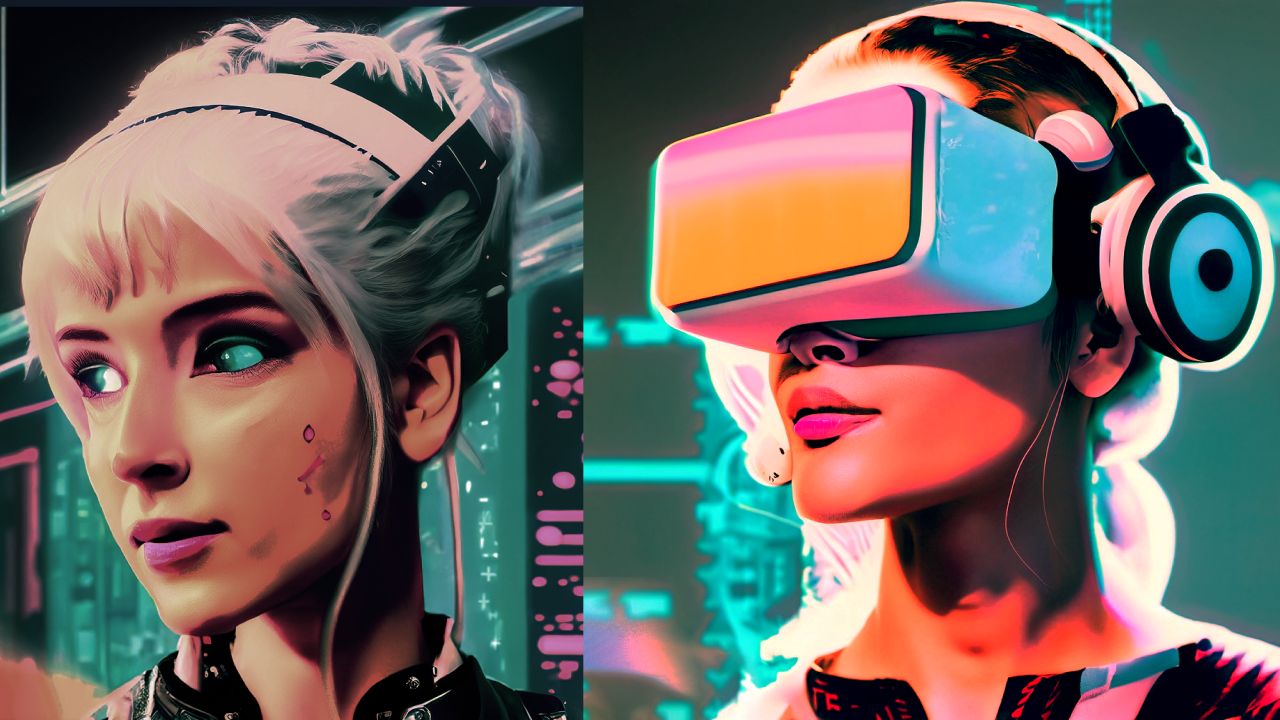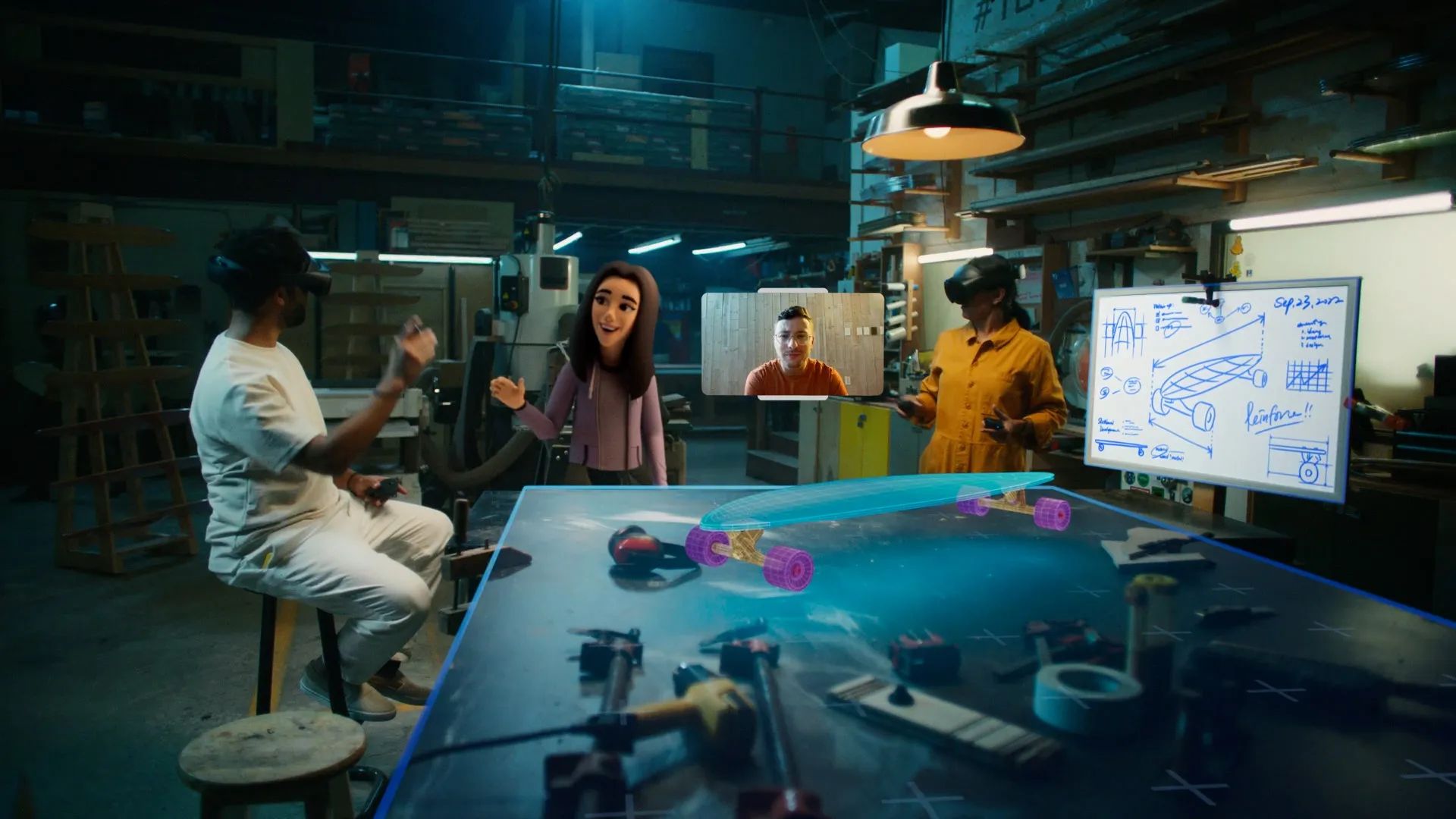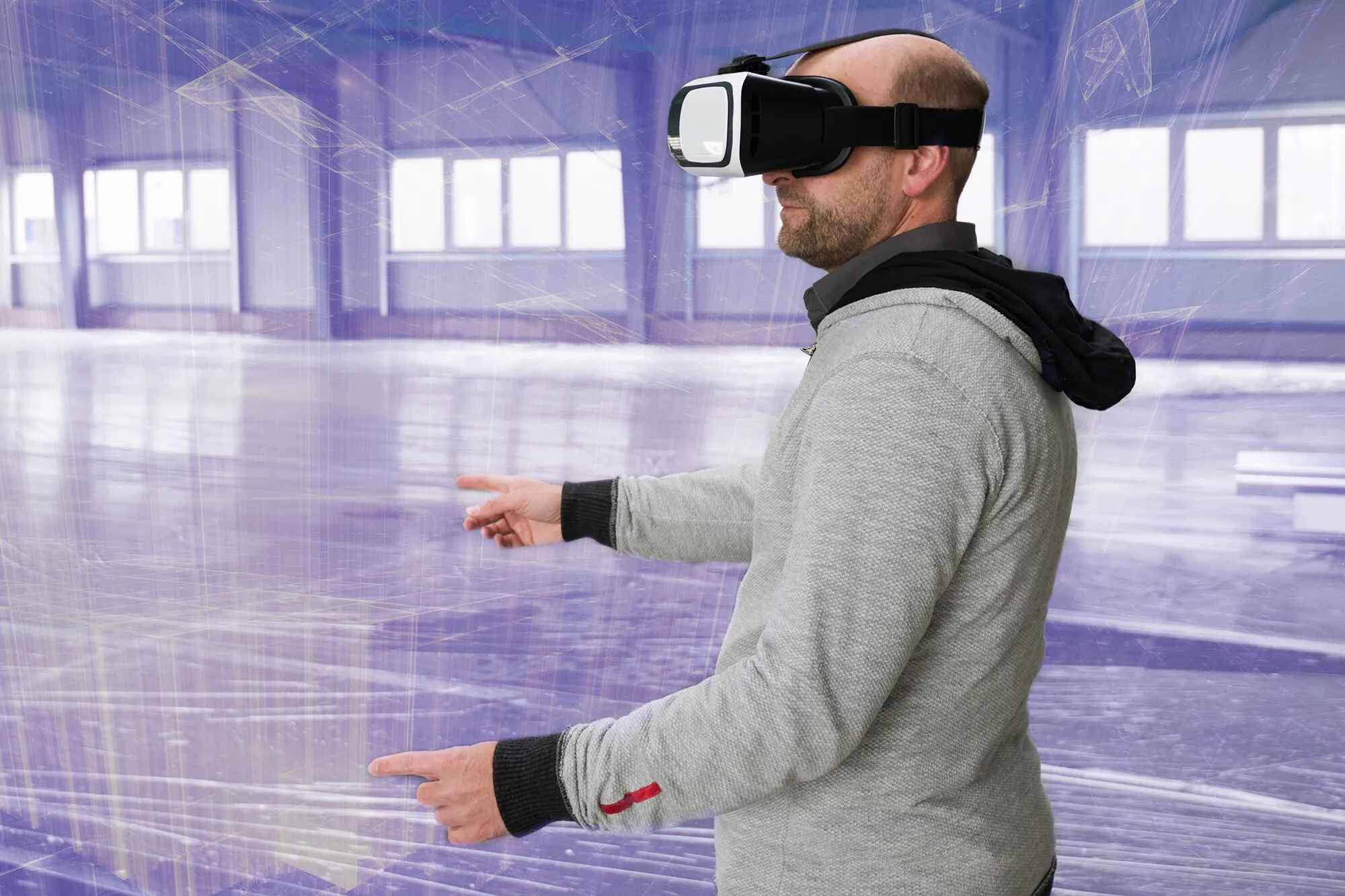Introduction
In recent years, the concept of the metaverse has gained significant attention and speculation. It has been hailed as the next evolution of the internet, a virtual realm where people can interact, work, play, and explore in a fully immersive and interconnected digital environment. But how does the metaverse differ from its predecessor, Second Life? In this article, we will explore the key differences between the metaverse and Second Life and delve into the unique aspects that set them apart.
Second Life, launched in 2003, was one of the first virtual worlds that gained widespread popularity. It allowed users to create avatars, explore virtual landscapes, build structures, and engage in social interactions with other users. It was an ambitious project that blurred the lines between reality and the virtual realm. However, the metaverse takes this concept to a whole new level.
The metaverse is not confined to a single platform or application; rather, it is envisioned as a vast interconnected network of virtual spaces, accessible through various devices and technologies. It aims to create a seamless and immersive virtual experience that parallels the real world. It goes beyond just social interactions and entertainment, encompassing areas like education, commerce, work, and even governance.
In the metaverse, users have the freedom to navigate through a rich and diverse digital landscape, generated by a combination of user-generated content and computer-generated worlds. This open-ended nature allows for endless possibilities and creativity, making the metaverse an exciting prospect for individuals and businesses alike.
However, while Second Life was primarily a user-driven platform, the metaverse seeks to incorporate artificial intelligence, machine learning, and virtual reality technologies to enhance the user experience. It aims to bridge the gap between the physical and virtual worlds, seamlessly blending the two realms together.
Throughout the following sections, we will explore and compare the key differences between the metaverse and Second Life in terms of realism and immersion, user interface and interaction, ownership and economy, social interactions and collaboration, and security and privacy. Understanding these distinctions will provide insights into the potential of the metaverse and how it differs from its predecessor.
Second Life: A Virtual World
Second Life, launched in 2003 by Linden Lab, was a groundbreaking virtual world that allowed users to create avatars and explore a vast and dynamic digital landscape. Users could engage in various activities, such as socializing, shopping, attending events, and even building their own virtual properties. Second Life gained immense popularity and became known for its user-driven content and creative possibilities.
One of the key features of Second Life was its user-generated content. Users had the freedom to create and design their own virtual objects, buildings, and even entire landscapes. This led to a thriving virtual economy, where users could buy and sell virtual goods using the in-game currency called Linden Dollars. The ability to own and trade virtual possessions gave users a sense of ownership and empowerment within the virtual world.
Second Life also emphasized social interactions. Users could connect with others, join communities, and attend virtual events. It provided a platform for people from all over the world to come together, collaborate, and build meaningful relationships. From virtual weddings to live music performances, Second Life offered a vibrant and interactive social environment.
However, despite its innovative features, Second Life faced limitations. The platform’s graphics, while impressive at the time, lacked the level of realism that users desired. The user interface was also considered complex for newcomers, requiring a learning curve to navigate the virtual world effectively. Additionally, concerns around security and privacy arose, as incidents of harassment and unauthorized content became issues within the platform.
Nevertheless, Second Life’s impact on the development of virtual worlds and online communities cannot be undermined. It paved the way for the concept of the metaverse, demonstrating the potential for immersive digital experiences and user-driven content.
As technology continued to advance, the metaverse emerged as a more ambitious vision for the future of virtual worlds. With its promise of enhanced realism, seamless integration of virtual and physical realms, and the incorporation of cutting-edge technologies, the metaverse aimed to push the boundaries of what was possible in a virtual environment.
In the following sections, we will delve into the key differences between Second Life and the metaverse, exploring the advancements and unique aspects that set the metaverse apart as the next generation of virtual worlds.
What is the Metaverse?
The metaverse is a concept that envisions a fully immersive and interconnected virtual world where individuals can live, work, play, and interact in a digital environment that closely resembles the real world. Unlike Second Life, which was a standalone virtual world, the metaverse is a broader idea that spans multiple platforms and technologies.
At its core, the metaverse aims to create a seamless and interconnected network of virtual spaces that users can navigate and explore. It goes beyond just gaming or social interactions and encompasses various aspects of life, such as education, commerce, entertainment, and even governance. In the metaverse, users can access and interact with a wide range of digital experiences and services, seamlessly transitioning between different virtual environments.
A key distinction of the metaverse is its focus on realism and immersion. With advancements in technology such as virtual reality (VR) and augmented reality (AR), the metaverse aims to provide a more lifelike and immersive experience. Users can utilize VR headsets or AR devices to interact with the virtual world in a more tangible way, blurring the lines between the physical and digital realms.
Additionally, the metaverse aims to incorporate artificial intelligence (AI) and machine learning algorithms to create dynamic and responsive virtual environments. These technologies enable the metaverse to adapt to user preferences and behaviors, providing personalized experiences and enhancing overall engagement.
Another significant aspect of the metaverse is its emphasis on collaboration and social interactions. Users can connect with others, collaborate on projects, and engage in shared experiences within the virtual world. Whether it’s attending virtual conferences, collaborating on virtual workspaces, or participating in immersive multiplayer games, the metaverse fosters social connections and encourages collaboration on a global scale.
Furthermore, the metaverse introduces the concept of a decentralized digital economy. Through blockchain technology and digital currencies, users can participate in a vibrant and secure virtual economy. The metaverse enables users to buy, sell, and trade virtual assets, including digital art, virtual real estate, and unique virtual items, while ensuring transparency, authenticity, and ownership rights.
However, unlike Second Life, where ownership was limited to the virtual platform, the metaverse offers the potential for users to own and transfer virtual assets across multiple platforms and applications. This interconnectedness allows for greater flexibility and integration within the metaverse ecosystem.
As the metaverse continues to develop, it holds immense potential for various industries and sectors. From virtual classrooms and remote workspaces to virtual marketplaces and entertainment experiences, the metaverse offers new possibilities and opportunities for individuals, businesses, and organizations.
In the upcoming sections, we will explore the key differences between the metaverse and Second Life in terms of realism and immersion, user interface and interaction, ownership and economy, social interactions and collaboration, as well as security and privacy. Through this exploration, we can gain a deeper understanding of how the metaverse diverges from its predecessor and the potential it holds for the future.
Key Differences
While Second Life and the metaverse both fall under the umbrella of virtual worlds, there are fundamental differences that set them apart. These differences span across various aspects, including realism and immersion, user interface and interaction, ownership and economy, social interactions and collaboration, as well as security and privacy. Understanding these key differences will shed light on the transformative potential of the metaverse.
Firstly, when it comes to realism and immersion, the metaverse aims to provide a more lifelike and immersive experience compared to Second Life. With advancements in technology such as virtual reality and augmented reality, the metaverse offers users a more immersive and sensory experience, enabling them to feel more present and engaged in the virtual environment.
In terms of user interface and interaction, Second Life had a complex user interface that required a learning curve for newcomers. In contrast, the metaverse seeks to prioritize user-friendliness and accessibility. It aims to provide intuitive interfaces and seamless navigation, allowing users to easily explore and interact with the virtual world without significant barriers.
Ownership and economy also differ between Second Life and the metaverse. In Second Life, users could buy and sell virtual goods using the in-game currency. However, ownership was confined primarily to the Second Life platform. In contrast, the metaverse aims to enable users to own and transfer virtual assets across multiple platforms and applications. This interoperability allows for a more interconnected and seamless virtual economy.
When it comes to social interactions and collaboration, Second Life provided a platform for users to connect and engage in various activities together. However, the metaverse takes this aspect to new heights, fostering global social connections and facilitating collaborative experiences across diverse virtual environments. Collaboration tools, virtual workspaces, and shared experiences are key features of the metaverse, enhancing collaboration potential and enabling new forms of interaction.
Furthermore, security and privacy have always been concerns in virtual worlds. Second Life experienced issues such as harassment and unauthorized content. The metaverse seeks to address these concerns by implementing robust security measures and providing users with greater control over their privacy. As the metaverse develops, efforts are being made to ensure a secure and trusted virtual environment for users.
In this section, we have explored the key differences between Second Life and the metaverse. From the enhanced realism and immersion of the metaverse to its user-friendly interface, from the interoperable virtual economy to the emphasis on collaboration and the prioritization of security and privacy, the metaverse represents a significant leap forward in the evolution of virtual worlds.
In the following sections, we will examine each of these differences in greater detail, providing insights into how the metaverse is pushing the boundaries of what is possible in the virtual realm.
Realism and Immersion
One of the key differences between the metaverse and Second Life lies in their approach to realism and immersion. While Second Life provided a virtual environment for users to explore and interact with, the metaverse takes this concept to a whole new level, aiming to offer a more lifelike and immersive experience.
Second Life, launched in 2003, featured graphics that, while impressive for its time, had limitations in terms of realism. The virtual world had a distinct visual style that was both creative and imaginative, but it lacked the level of detail and fidelity that would allow users to feel fully immersed in a virtual environment.
In contrast, the metaverse leverages advancements in technology such as virtual reality (VR) and augmented reality (AR) to provide users with a more immersive experience. VR technology allows users to wear a headset and enter a three-dimensional virtual world, where they can interact with their surroundings through hand controllers or other input devices. This level of immersion simulates a sense of presence and allows users to feel as if they are physically present in the virtual environment.
Augmented reality, on the other hand, provides an overlay of virtual content onto the real world, blending the digital and physical realms. Users can experience the metaverse through AR devices such as smart glasses or mobile devices, where virtual objects and environments are seamlessly integrated into their real-world surroundings. This integration can range from simple overlays of information to complex interactive experiences.
In addition to VR and AR, the metaverse also incorporates other technologies and techniques to enhance realism and immersion. These include improved graphics and rendering capabilities, realistic physics simulations, haptic feedback, and spatial audio. The combination of these elements creates a more realistic and sensory-rich virtual experience, allowing users to engage with the metaverse in a way that closely resembles real-world interactions.
Another aspect that adds to the immersion in the metaverse is the ability to seamlessly transition between different virtual environments. Users can travel from one virtual space to another without the need for interruptions or loading screens. This continuous experience creates a more cohesive and immersive virtual world, enabling users to explore and engage with different aspects of the metaverse seamlessly.
Overall, the metaverse strives to provide a higher level of realism and immersion compared to Second Life. By leveraging emerging technologies such as VR and AR, as well as other advancements in graphics and physics simulations, the metaverse aims to blur the lines between the physical and digital worlds, creating a truly immersive digital experience.
In the next section, we will discuss another key difference between the metaverse and Second Life – the user interface and interaction – and how this impacts the overall user experience in the virtual realm.
User Interface and Interaction
Another crucial difference between the metaverse and Second Life lies in their user interface (UI) and interaction design. While Second Life had a complex UI that required a learning curve to navigate effectively, the metaverse aims to prioritize user-friendliness and accessibility.
Second Life’s UI consisted of a combination of menus, buttons, and controls, which could be overwhelming for new users. Navigating the virtual world and interacting with objects and other avatars required some familiarity with the platform’s UI elements and controls. This complexity often led to a steeper learning curve, especially for individuals less technologically inclined or those new to virtual worlds.
In contrast, the metaverse aims to provide a more intuitive and user-friendly UI. It strives to create a seamless and easy-to-navigate interface that allows users to effortlessly explore the virtual environment and interact with objects and other users. The design of the metaverse’s UI focuses on simplicity, clarity, and user-centeredness, ensuring that users can quickly adapt to the virtual world and enhance their overall experience.
To achieve this, the metaverse incorporates user experience (UX) design principles, including clear visual cues, intuitive controls, and contextual menus. The goal is to create an interface that minimizes cognitive load and provides users with a more intuitive and natural way to interact with virtual objects and environments.
Moreover, the metaverse leverages emerging technologies to enhance user interaction. For instance, natural language processing and voice recognition enable users to communicate with virtual entities through voice commands. Gesture recognition and motion tracking allow users to interact with virtual objects through hand movements and body gestures, further enhancing the sense of presence and immersion.
Additionally, the metaverse emphasizes the integration of haptic feedback, which provides users with tactile sensations, adding a new dimension to user interaction. With haptic feedback, users can feel the texture of virtual objects or experience simulated physical sensations, amplifying their immersion in the virtual world.
Furthermore, the metaverse incorporates advancements in artificial intelligence (AI) and machine learning (ML). These technologies enable the virtual world to adapt and respond to user preferences and behaviors. The metaverse can personalize content, suggest relevant experiences, and optimize user interfaces based on individual preferences, providing a tailored and engaging user experience.
By prioritizing user-friendly design principles, integrating emerging technologies, and incorporating adaptive AI systems, the metaverse aims to create a more accessible and intuitive virtual environment. This approach makes it more welcoming to a broader audience, regardless of their technological expertise or prior experience with virtual worlds.
In the following section, we will explore another important distinction between the metaverse and Second Life – the concept of ownership and economy – and how they impact the user experience and virtual ecosystem.
Ownership and Economy
Ownership and economy play a significant role in both Second Life and the metaverse, but there are important differences in how these aspects are approached and implemented.
In Second Life, users had the ability to buy and sell virtual goods and services using the in-game currency called Linden Dollars. This created a thriving virtual economy within the platform, where users could trade virtual assets, such as clothing, furniture, and virtual real estate. However, ownership was confined primarily to the Second Life platform, limiting the transferability and flexibility of virtual assets.
In contrast, the metaverse aims to enable users to own and transfer virtual assets across multiple platforms and applications. This interoperability creates a more interconnected and seamless virtual economy. Users can buy, sell, and trade virtual assets such as digital art, virtual land, virtual fashion items, and even virtual identities, sometimes using blockchain technology and digital currencies to ensure transparency, security, and authenticity.
The concept of ownership in the metaverse extends beyond simple possession of virtual goods. It encompasses the idea of digital property rights, allowing users to have true ownership over their virtual assets. This ownership can involve not just the acquisition and transfer of assets but also the ability to modify, customize, and monetize them within the virtual world.
Furthermore, the metaverse explores new possibilities for economic models and monetization strategies. Traditional revenue streams, such as advertising, subscription-based models, and virtual currency exchange, continue to play a role in the metaverse. However, with the rise of decentralized finance and non-fungible tokens (NFTs), the metaverse opens up new avenues for creators and users to monetize their virtual assets and intellectual property.
NFTs, which are unique digital assets traded on blockchain platforms, offer a way to authenticate and sell virtual assets as distinct pieces of digital property. This allows creators to establish scarcity and value for their virtual creations, resulting in a more robust and diverse virtual economy.
Additionally, the metaverse provides opportunities for users to generate income through various activities, such as virtual goods creation, virtual services provision, and participation in virtual events. Users can engage in virtual commerce, trade virtual assets, and even monetize their skills and expertise within the virtual world.
The concept of ownership and the evolving virtual economy in the metaverse not only provide users with a sense of empowerment and control but also open up new possibilities for businesses, creators, and entrepreneurs. By enabling the transfer and monetization of virtual assets across platforms and embracing decentralized finance, the metaverse fosters a more dynamic, interconnected, and inclusive virtual economy.
In the next section, we will delve into the aspect of social interactions and collaboration, highlighting the differences between Second Life and the metaverse and how they shape the virtual social landscape and networking opportunities.
Social Interactions and Collaboration
Social interactions and collaboration are essential components of virtual worlds, and both Second Life and the metaverse offer platforms for connecting with others. However, there are notable differences in how these interactions and collaborations are facilitated between the two.
Second Life provided users with a virtual space where they could engage in social interactions, join communities, and attend events. Users could communicate with others through text chat, voice chat, and instant messaging, forming connections and building relationships within the digital realm. Second Life fostered a sense of community and provided a platform for individuals from all over the world to come together and interact.
In contrast, the metaverse amplifies social interactions and collaboration by leveraging emerging technologies and focusing on the integration of virtual experiences. The metaverse offers opportunities for individuals to connect, collaborate, and participate in shared virtual activities across various virtual environments and platforms.
The metaverse facilitates social interactions by providing features such as voice chat, text chat, and video conferencing, allowing users to communicate and collaborate with greater ease and immersion. Users can engage in virtual gatherings and events, attend virtual conferences, or collaborate on projects within virtual workspaces. These features enable real-time communication and foster deeper connections between users in the metaverse.
Moreover, the metaverse is designed to encourage collaboration on a global scale. It allows users from different geographical locations to come together and work collaboratively within virtual environments. Virtual workspaces, interactive virtual whiteboards, and shared project management tools enhance collaboration and enable users to work together seamlessly.
The metaverse also offers opportunities for shared experiences, such as immersive multiplayer games, virtual concerts, and virtual art exhibitions. These shared experiences create a sense of camaraderie and enable users to engage in collaborative activities while enjoying virtual entertainment.
Furthermore, the metaverse supports various forms of collaboration, including education, research, and professional networking. Virtual classrooms and training spaces offer new avenues for learning and skill development, while virtual conferences and industry-specific virtual communities allow professionals to network and exchange knowledge across global boundaries.
The metaverse’s emphasis on social interactions and collaboration extends beyond simple communication and networking. It aims to foster a sense of shared presence and create immersive experiences that transcend physical limitations, enabling people to interact, collaborate, and forge meaningful connections in the virtual realm.
In the next section, we will explore another critical aspect of virtual worlds – security and privacy – and how the metaverse differs from Second Life in addressing these concerns.
Security and Privacy
Security and privacy are important considerations for users in virtual worlds, and both Second Life and the metaverse have addressed these concerns to varying degrees. However, there are notable differences in how these platforms prioritize and approach security and privacy.
In Second Life, incidents of harassment, unauthorized content, and griefing were often reported. While the platform had safety features in place, such as content moderation and the ability to block or mute other users, users still faced challenges in maintaining their security and privacy. Concerns were raised regarding identity theft, unauthorized sharing of personal information, and the potential for malicious activities within the virtual world.
The metaverse, on the other hand, recognizes the importance of providing a secure and trusted virtual environment. Efforts are made to implement robust security measures and privacy controls to protect user information and ensure a safe experience. The concept of digital identity and verification is often integrated into metaverse platforms, allowing users to establish and control their virtual identities securely.
In addition to user authentication and identity management, the metaverse leverages advancements in encryption technologies to protect user communications and data. End-to-end encryption and secure protocols are employed to prevent unauthorized access and ensure the privacy of user interactions.
Furthermore, the metaverse aims to provide users with greater control over their privacy settings and personal information. Users have the option to manage their privacy preferences and choose what information they share with others. This control extends to virtual spaces as well, allowing users to establish private areas or restrict access to specific individuals or groups.
The metaverse also emphasizes community guidelines and moderation practices to create a safe and inclusive virtual environment. Content moderation and reporting mechanisms are implemented to address instances of harassment, hate speech, and inappropriate behavior. These measures help maintain a welcoming and respectful virtual community.
As the metaverse continues to evolve, efforts are being made to address emerging security and privacy concerns. Blockchain technology, for example, offers decentralized and transparent solutions that can enhance security and ownership authentication in virtual worlds. NFTs and smart contracts can provide verifiable proof of ownership and enable secure transactions within the metaverse.
Although challenges remain, the metaverse’s focus on security and privacy demonstrates a commitment to creating a virtual environment that users can trust and feel safe in.
In the next section, we will conclude by summarizing the key differences between the metaverse and Second Life and highlighting the potential impact of the metaverse on the future of virtual worlds.
Conclusion
In conclusion, the metaverse represents the next evolution in virtual worlds, offering a more immersive, interconnected, and transformative digital experience compared to Second Life. While Second Life paved the way for user-driven virtual environments, the metaverse takes these concepts to new heights by incorporating advanced technologies and addressing key limitations.
The metaverse distinguishes itself from Second Life in several key areas. It prioritizes realism and immersion by leveraging technologies like virtual reality and augmented reality to provide users with a more lifelike and sensory-rich experience. The metaverse’s user interface and interaction design aim to be more intuitive and accessible, with the integration of natural language processing, gesture recognition, and haptic feedback.
Ownership and economy in the metaverse differ from Second Life in terms of interoperability and decentralized finance. The metaverse enables users to own and transfer virtual assets across multiple platforms and embraces emerging technologies like non-fungible tokens (NFTs) to facilitate the creation of a robust and interconnected virtual economy.
Social interactions and collaboration in the metaverse go beyond mere communication, with features like virtual workspaces and shared experiences fostering global connections and teamwork. The metaverse emphasizes security and privacy, employing encryption, user authentication, and community guidelines to create a secure and trusted virtual environment.
While Second Life laid the foundation for virtual worlds, the metaverse pushes the boundaries of what is possible, aiming to seamlessly blend the physical and digital realms. It holds immense potential for various industries, including education, commerce, and entertainment, offering new opportunities for users, businesses, and creators.
As the metaverse continues to evolve, it is important to address challenges and concerns such as ensuring inclusivity, addressing ethical considerations, and creating equitable opportunities within the virtual landscape. However, the metaverse’s vision of creating a fully immersive, interconnected, and user-centric digital realm is an exciting prospect for the future of virtual worlds.
In conclusion, the metaverse marks a significant leap forward from Second Life, presenting a new era of virtual experiences that blur the boundaries between reality and the digital realm. By leveraging technology, prioritizing user-friendliness, embracing decentralized economies, and ensuring security and privacy, the metaverse has the potential to shape how we live, work, and interact in the digital age.

























